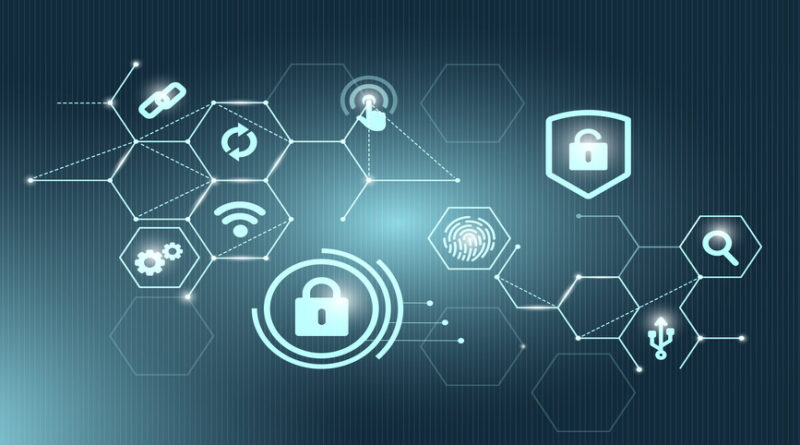Stay Safe in the Digital World: A Guide to Cybersecurity
Cybersecurity is the practice of protecting computers, servers, mobile devices, electronic systems, networks, and data from attack, damage, or unauthorized access. It involves implementing technologies, processes, and practices to prevent, detect, and respond to cyber threats and attacks.
Cybersecurity is a broad field that encompasses several domains, including:
Network Security
Network security involves protecting computer networks and their underlying infrastructure from unauthorized access, damage, or theft. This includes implementing firewalls, intrusion detection systems, and encryption technologies to secure networks.
Application Security
Application security focuses on protecting the software and applications that run on computer systems, networks, and the cloud. This includes secure coding practices, application testing, and the use of security tools to detect and prevent security threats.
Information Security
Information security focuses on protecting the confidentiality, integrity, and availability of sensitive information, such as financial data, personal information, and intellectual property. This includes data encryption, access controls, and secure storage practices.
Cloud Security
Cloud security involves protecting data and systems in cloud-based environments from cyberattacks and data breaches. This includes implementing security measures such as encryption, access controls, and network segmentation, as well as monitoring cloud resources for security threats.
Endpoint Security
Endpoint security involves protecting the devices and systems that access computer networks, including laptops, smartphones, and other internet of things (IoT) devices. This includes implementing antivirus and anti-malware tools, and securing access to networks through the use of firewalls and other security measures.
Disaster Recovery and Business Continuity
Disaster recovery and business continuity planning involves preparing for and responding to potential security incidents, such as data breaches or network outages, to minimize downtime and maintain the availability of critical systems and data.
Regulatory Compliance
Regulatory compliance involves ensuring that organizations comply with legal and regulatory requirements related to data privacy and security, such as the EU’s General Data Protection Regulation (GDPR) and the US’s Health Insurance Portability and Accountability Act (HIPAA).
Some common cybersecurity threats include:
Malware
Malware is a type of software designed to cause harm to computer systems, networks, or data. This can be viruses, worms, Trojans, and spyware.
Phishing
Phishing is a type of social engineering attack that tricks individuals into providing sensitive information, such as passwords or financial information, to an attacker posing as a trustworthy entity.
Ransomware
A variety of malware termed as ransomware encrypts an user ’s data and demands money in exchange for the decryption key.
Man-in-the-Middle Attacks
Man-in-the-middle attacks occur when an attacker intercepts and manipulates communication between two parties without their knowledge.
SQL Injection
SQL injection is a type of attack that exploits vulnerabilities in database software to gain unauthorized access to sensitive information.
Cross-Site Scripting (XSS)
Cross-site scripting is a kind of vulnerability that permits an attacker to inject malicious code onto a web page that is viewed by other users.
Distributed Denial of Service (DDoS) Attacks
DDoS attacks involve overwhelming a website or network with traffic from multiple sources, causing it to become unavailable to users.
Insider Threats
Insider threats refer to security risks posed by employees, contractors, or other insiders who have access to sensitive information or systems.
By staying informed about these and other cybersecurity threats, individuals, businesses, and governments can better protect against cyberattacks and reduce their risk of falling victim to these security risks.
Here are some tips for improving your personal and organizational cybersecurity:
Use strong and unique passwords
Use a combination of letters, numbers, and symbols to create strong and unique passwords for all your accounts, and avoid using the same password for multiple accounts.
Enable two-factor authentication
Two-factor authentication provides an extra layer of security by requiring a second form of verification, such as a code sent to your phone, in addition to your password.
Keep software up to date
Regularly updating your operating system, web browsers, and other software can help protect against security vulnerabilities and malware attacks.
Be cautious of email and online scams
Be wary of unsolicited emails and online advertisements that ask for personal information or request that you download software or attachments.
Use antivirus and anti-malware software
Antivirus and anti-malware software can detect and remove malware from your devices, helping to protect against cyberattacks.
Use encryption
Encrypting sensitive data, such as financial information, can help protect it from unauthorized access in the event of a data breach.
Back up important data
Regularly backing up important data, such as documents, photos, and videos, can help protect against data loss in the event of a cyberattack or other system failure.
Limit access to sensitive information
Limit access to sensitive information, such as financial information and passwords, by using encryption and secure storage methods.
Implement security policies and procedures
Develop and implement security policies and procedures, such as employee training, software updates, and incident response plans, to help protect against cyber threats.
Stay informed
Stay informed about the latest cybersecurity threats and best practices by following industry news and updates from reliable sources.




